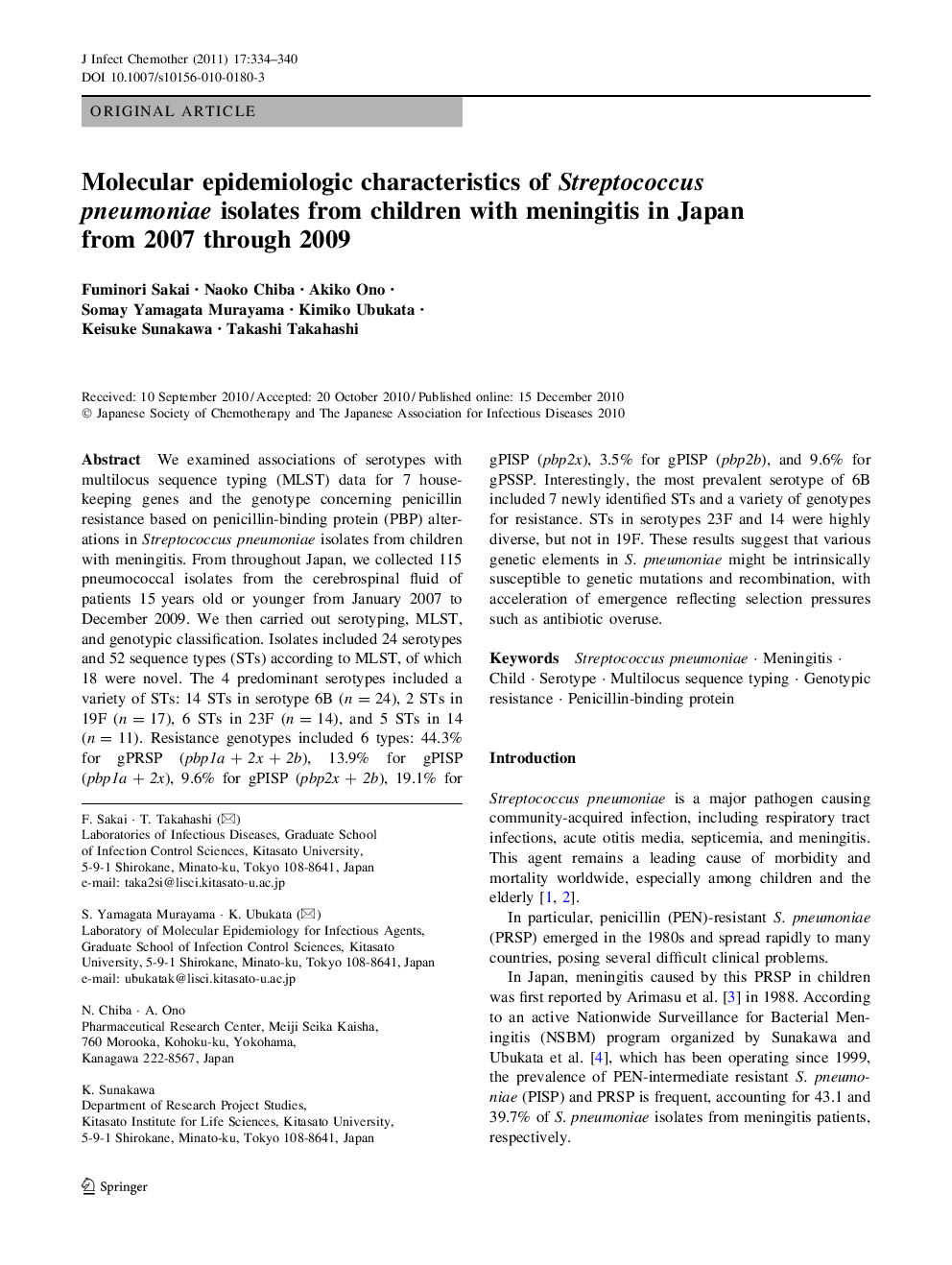| کد مقاله | کد نشریه | سال انتشار | مقاله انگلیسی | نسخه تمام متن |
|---|---|---|---|---|
| 3377002 | 1219953 | 2011 | 7 صفحه PDF | دانلود رایگان |

We examined associations of serotypes with multilocus sequence typing (MLST) data for 7 housekeeping genes and the genotype concerning penicillin resistance based on penicillin-binding protein (PBP) alterations in Streptococcus pneumoniae isolates from children with meningitis. From throughout Japan, we collected 115 pneumococcal isolates from the cerebrospinal fluid of patients 15 years old or younger from January 2007 to December 2009. We then carried out serotyping, MLST, and genotypic classification. Isolates included 24 serotypes and 52 sequence types (STs) according to MLST, of which 18 were novel. The 4 predominant serotypes included a variety of STs: 14 STs in serotype 6B (n = 24), 2 STs in 19F (n = 17), 6 STs in 23F (n = 14), and 5 STs in 14 (n = 11). Resistance genotypes included 6 types: 44.3% for gPRSP (pbp1a + 2x + 2b), 13.9% for gPISP (pbp1a + 2x), 9.6% for gPISP (pbp2x + 2b), 19.1% for gPISP (pbp2x), 3.5% for gPISP (pbp2b), and 9.6% for gPSSP. Interestingly, the most prevalent serotype of 6B included 7 newly identified STs and a variety of genotypes for resistance. STs in serotypes 23F and 14 were highly diverse, but not in 19F. These results suggest that various genetic elements in S. pneumoniae might be intrinsically susceptible to genetic mutations and recombination, with acceleration of emergence reflecting selection pressures such as antibiotic overuse.
Journal: Journal of Infection and Chemotherapy - Volume 17, Issue 3, 2011, Pages 334-340